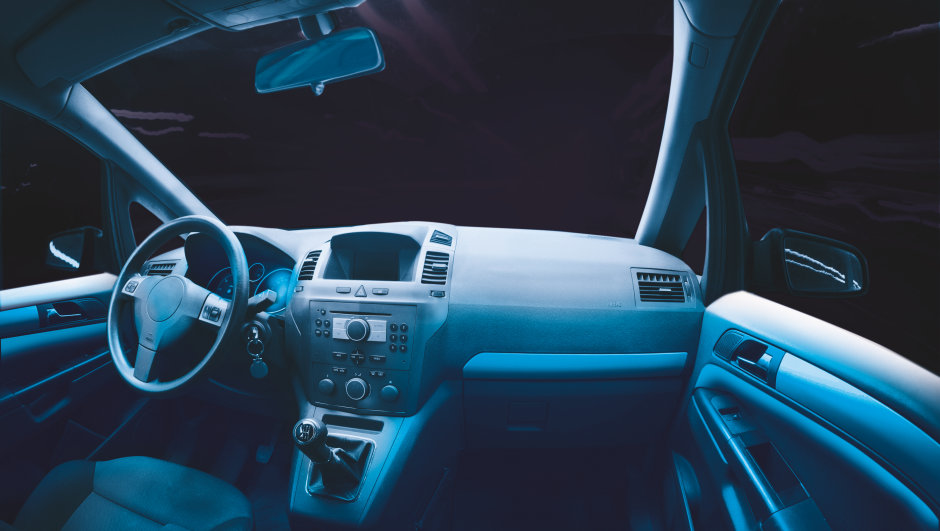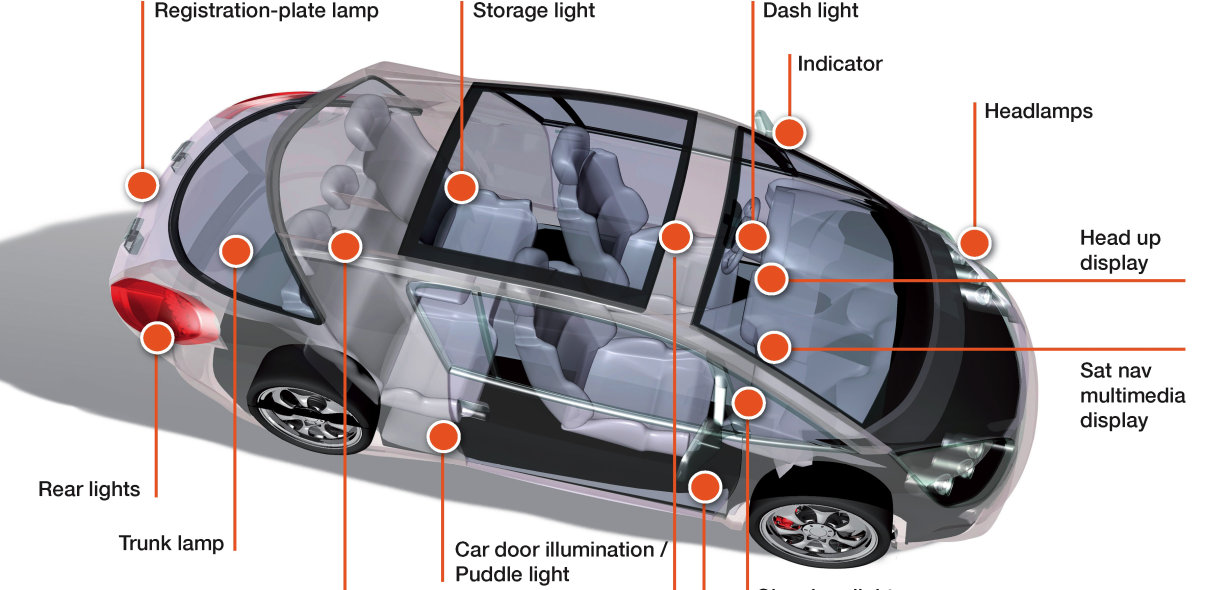LEDs are point light sources, whereas OLEDs are surface lights. Several lighting applications in cars – indicators, tail lamps, or interior light – require wide-area illumination. The most significant challenge for organic light emitting diodes in automotive applications is thermal stability: To meet the requirements of manufacturers, OLEDs in tail lights for example must resist temperature peaks of at least 85 degrees Celsius.
OSRAM has worked intensively towards solving this challenge, and with success. In the summer of last year, an OLED was presented that was able to resist such high temperatures over several hundred hours as part of a long-term laboratory test. In the meantime, high temperature resistance has been improved to several thousand hours. "Following on from this research success, we are now tackling future use in series vehicles," informed Dr. Ulrich Eisele, responsible for the OLED segment at OSRAM. "The automotive sector plans and develops its future models with very long lead times," said Eisele. "And this is why we have to be a part of this to help develop the cars of the future."
LED continues to be the technology of the times: Three reasons
Modern light design
Why do consumers buy one car and not the other? A decisive purchasing factor is design. Thus companies make every effort to give their models a special "look." "Light has become an essential element of design for automotive designers. Even in complete darkness, a brand-typical appearance should be recognized," said Florian Rommen, Marketing Manager for Automotive Exterior LED at OS.
Usually differing LEDs are used for the various applications (daytime running light, dipped beam, full beam, indicator) because of specific technical requirements. But independent of LED type, all components are available in the same white groupings, giving them a seamless appearance. LEDs can be similarly processed, allowing sophisticated design concepts to be carried out without intense effort. In October 2012, OS presented the currently most compact high-power LED for the automotive market with its prototype of the Oslon Compact. "Because of the extremely compact construction and high light intensity, light points in headlights can now be configured more simply and also randomly," said Rommen – the "design of light" of the vehicle takes on an unmistakable appearance, and new applications can be realized.
Safety
Since single LEDs can be aligned in tight sequence, it facilitates decorative light strip solutions and also AFS (Adaptive Frontlighting System) applications. Here the light of the front headlamps adapts to its surroundings: If another vehicle approaches, several LEDs in the headlamps switch off via intelligent control to avoid dazzling the oncoming traffic. Another trend is adaptive lighting for interiors: Light sources inside the vehicle are dimmed on non-illuminated carriageways to avoid irritating other motorists and to simplify adaptation of the driver's eyes.
If, on the other hand, the driver is on roads within towns or cities, the interior brightens to enable instruments and surfaces to be easily recognized in the bright surroundings. And if that isn't enough,he outstanding quality of light of the LEDs and their daylight-similar white light improves contrast perception. Other motorists, pot holes, and similar obstacles are identified earlier and more clearly, and the eyes of drivers are subject to less fatigue.

